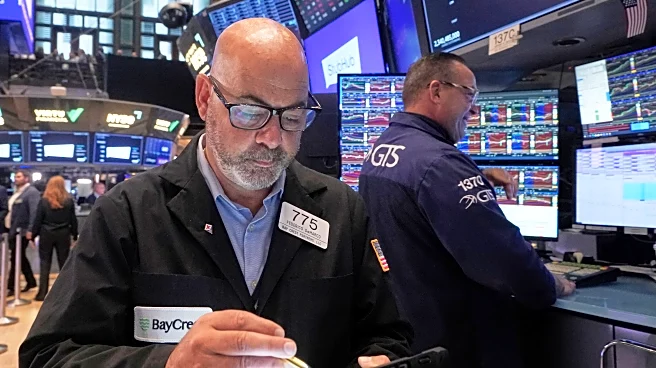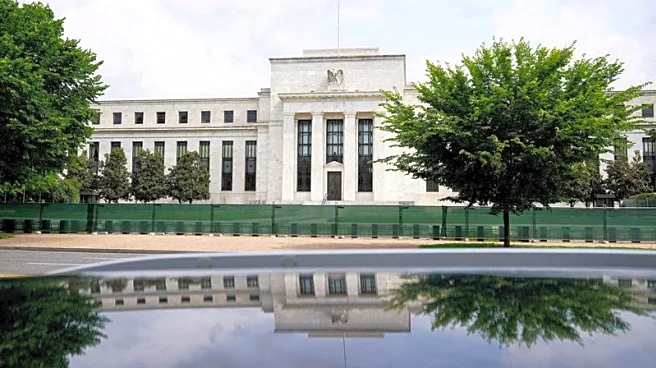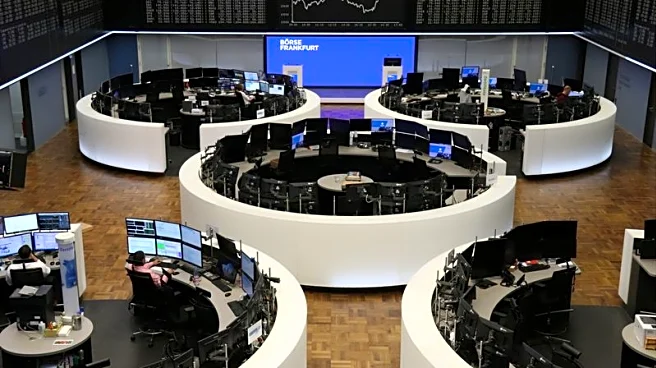What is the story about?
What's Happening?
Feeder cattle prices experienced a significant decline, with October feeder cattle closing down $5.18 at $349.13 per hundredweight. This drop is part of a broader trend affecting the livestock market, where cattle futures have been leading the decline due to weakening cash trade and deteriorating packer margins. Retail demand for beef is becoming uncertain, contributing to the pressure on cattle prices. Despite the decline in cattle prices, pork demand remains relatively stable, limiting losses in the hog market. The broader commodity market also saw fluctuations, with corn and soybean prices experiencing minor declines.
Why It's Important?
The decline in feeder cattle prices highlights the volatility in the agricultural commodity markets, which can have significant implications for farmers and the broader agricultural economy. Lower cattle prices can impact the profitability of cattle producers, potentially leading to financial strain for those heavily reliant on livestock sales. The uncertainty in retail demand and packer margins further complicates the market outlook, as producers may face challenges in maintaining profitability. Additionally, fluctuations in other commodity prices, such as corn and soybeans, can affect feed costs and overall farm income.
What's Next?
Market participants will be closely monitoring the Federal Reserve's anticipated interest rate decision, as changes in interest rates can influence the U.S. dollar's strength and, consequently, the competitiveness of U.S. agricultural exports. A weaker dollar could potentially boost exports, providing some relief to commodity markets. Producers and market analysts will also be watching for any shifts in consumer demand and retail trends that could impact livestock prices. Continued market volatility may prompt producers to adjust their strategies to mitigate risks and capitalize on potential opportunities.
AI Generated Content
Do you find this article useful?















